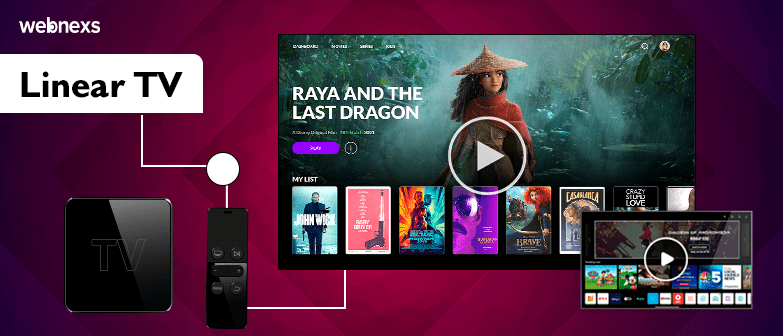Remember the days when you had to plan your evening around your favorite TV shows or movies? When you had to sit through commercials and wait for the next episode to air? That was the era of linear TV, the traditional broadcasting format that has been a staple in households for decades.
But in recent years, the rise of on-demand streaming services has challenged the dominance of linear TV. With the ability to watch content anytime, anywhere, and without commercials, it’s no wonder that streaming has become so popular. In this blog, we explore how linear TV is adapting to the age of streaming and whether it can survive in a world of cord-cutting and on-demand viewing.
What Is Linear TV?
Linear TV refers to traditional TV broadcasting, where TV programs are broadcasted according to a pre-determined schedule. With Linear TV, viewers cannot choose the TV shows or movies they want to watch, instead, they have to watch what is being broadcast at that moment.
How It Works?
Linear TV works by broadcasting TV programs at specific times, according to a predetermined schedule. Viewers can access Linear TV content through cable, satellite, or over-the-air broadcasting.
To access Linear TV content, viewers need a TV set and a compatible TV service, such as a cable or satellite TV subscription. Linear TV services may require a monthly fee, and viewers may have to pay extra to access premium channels or on-demand content.
Benefits of Linear TV
- Wide selection of content: It offers a vast selection of TV programs and channels, often not available on streaming services.
- Cost-effective: It can be cheaper than streaming services, especially for viewers who only want to access a few channels.
- Access to live events: Linear TV offers access to live events, such as sports, news, and award shows, as they happen.
Challenges of Linear TV
While Linear TV offers many benefits, it is not without its challenges. One of the main challenges is the lack of flexibility, as viewers cannot choose the TV shows or movies they want to watch, and they have to watch what is being broadcast at that moment. Another challenge is the increasing competition from streaming services, which offer more flexibility and on-demand content.
Linear TV remains a popular option for many viewers, offering a vast selection of TV programs and channels. However, it is important to consider the lack of flexibility and increasing competition from streaming services when choosing a TV service.
So, if you’re curious about the history and future of TV?


Leave a Reply